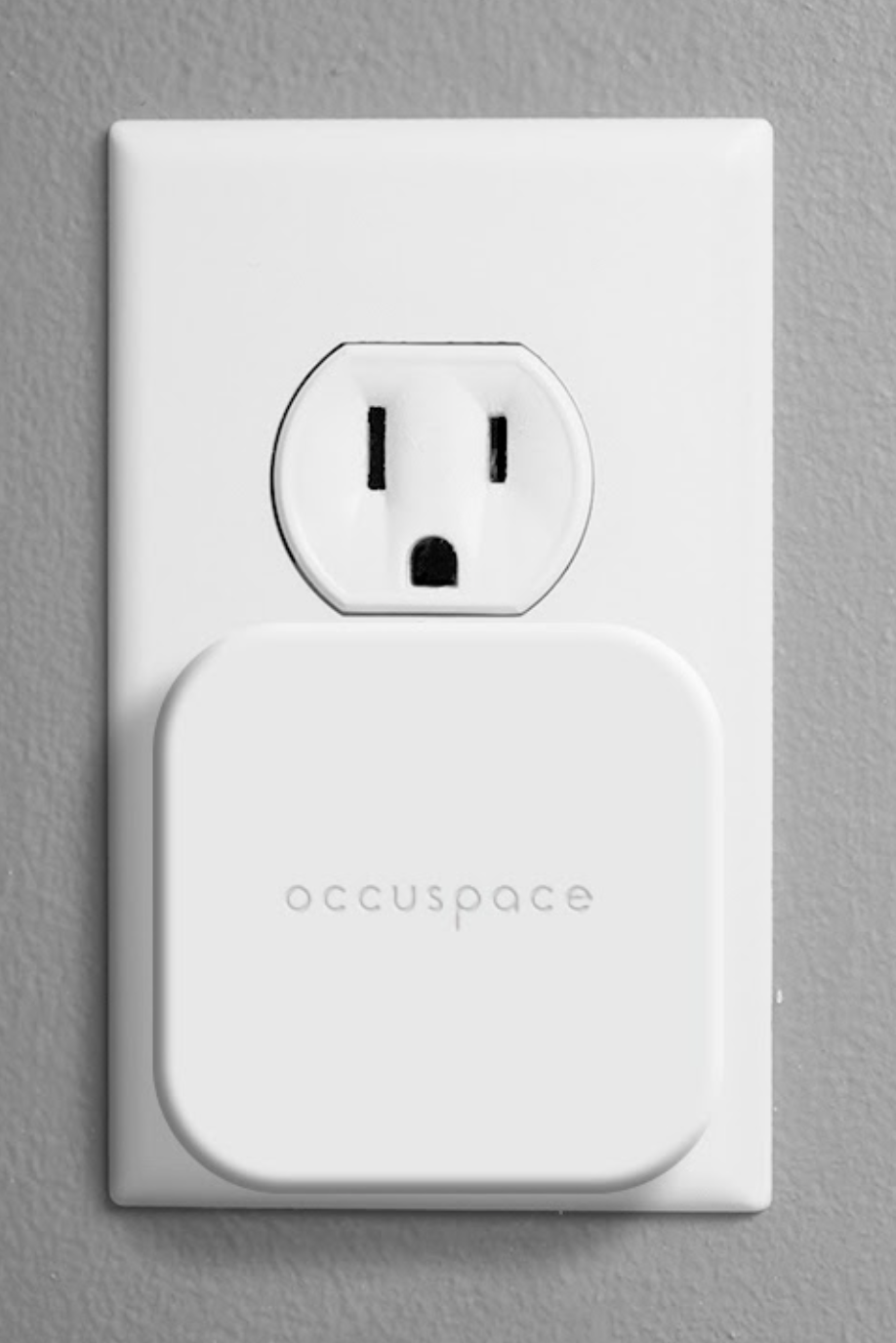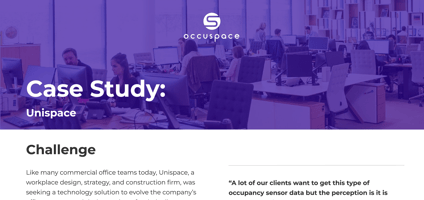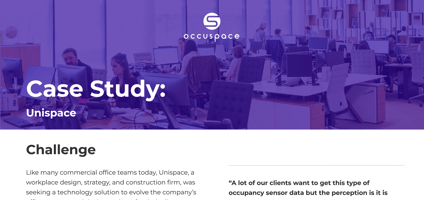Finally, a coronavirus vaccine is being rolled out and many of us are already dreaming about what a...
Occupancy Monitoring 101
- By Nic Halverson
CEO OF Occuspace
What Is Occupancy Monitoring?
Also known as people counting, foot traffic monitoring, and crowd management technology, occupancy monitoring technology counts the number of people currently in a certain building, floor, or other defined space.

Three Things To Know About Occupancy Monitoring
- Virtually any business could benefit from occupancy monitoring - corporate office spaces to universities, retail, automotive, multifamily residential, and the hospitality industry.
- It can be a cost-effective way to improve business operations and visitor experiences.
- Occupancy data can be used to gain real-time or historical space usage insights.
How Does It Work?
There are lots of ways to monitor the number of people in a space. Some are old school and require zero technology. Where others use sophisticated hardware and algorithms.
Here are a few of the different kinds of occupancy monitoring options currently available:
- Manual Monitoring: This is probably something you’ve seen around your local mall or sports venue. An employee stands outside the store using a clicker (or tally counter) to keep track of how many customers go in and out of the store to make sure they don’t exceed their visitor capacity, often causing a line to form outside. It’s also common for Fortune 500 companies to have people do manual counts around their office buildings as manual “space audit” utilization reports.
- Break-beam sensors: These detect motion by using infared beams of light that count the number of people based on how many times the line is crossed. Usually placed on either side of a doorway, these sensors are typically low-cost and give a good baseline trend. However, they are prone to error and lack in the granularity of more specific parts of the building visitors are going.
- Thermal sensors: These detect body heat as a person walks past the sensor in order to monitor occupancy. This technology is anonymous, however, accuracy can be an issue when people are still, overlapping, or carrying warm items like a laptop due to the way the sensors detect heat.
- Camera sensors: Cameras are pretty self-explanatory. They use video surveillance to actively count the number of people going in and out of a location. Due to the lack of anonymity, they are great for businesses looking to gather more information about who their customers are (i.e. gender, age, etc). Camera sensors require some infrastructure changes to set up.

- Radar Sensors: These can be installed pretty much anywhere on a ceiling and detect moving or stationary objects. Because of their vantage point they can cover large areas, to monitor occupancy and are often popular in office building settings. Although they cover a large area, they can lose accuracy when there is a lot of movement.
- WiFi and Bluetooth sensors: This approach uses sensors that are typically easy to install and scan for Bluetooth and WiFi signals (phones, tablets, wearables, etc.), identifying the total number of unique signals in a space. Using machine learning algorithms the signals are analyzed to calculate the number of people in a specific space. With this method, you can monitor an entire building or a specific floor. Personally identifiable information is protected while providing highly accurate measures of occupancy.
Why Use Occupancy Monitoring?
There are many obvious benefits for businesses to monitor foot traffic (e.g. how many people are in my space right now), but also many unanticipated benefits that have helped users enhance workplace operations, save on costs and energy consumption, and better plan for future construction or renovations.
Here are some reasons to consider occupancy monitoring:
- Get real-time and historical data: Real-time crowd-level information helps businesses ensure their buildings remain within capacity requirements. Occupancy data collected over time can also offer historical insights and reveal crowd patterns to help make more informed, cost-effective space planning decisions.
- Promote social distancing: The pandemic has increased the need for occupancy monitoring technology to help businesses more accurately manage space density and avoid potential crowding to abide by COVID regulations and promote social distancing.
- Improve visitor experiences: On average, retailers lose $38B in potential revenue due to consumers avoiding long lines and wait times. However, businesses can use historical occupancy data to provide customers a more convenient and comfortable experience with the ability to better anticipate and manage crowding, reducing wait times and overall increasing visitor loyalty. With data that can be fed to an app or API, consumers can gain access to real-time occupancy data for businesses that they frequent to “know before they go” to a potentially busy space.
- Let data help determine how to use - or grow - your space: Real estate is a large cost to any business - whether you rent or own. If building spaces are underused, the cost of maintaining that space on the bottom line can be significant. Imagine the possibilities that highly-accurate occupancy traffic monitoring can have on business revenue when you know which spaces are underutilized and should be evaluated. On the other hand, when spaces are consistently overused, occupancy data can help validate the expense of acquiring additional space.
I think that it's only beneficial to continue to roll out a tool like [occupancy monitoring]. The more information we can put in people's hands, the more we can equip them in the case of COVID to make responsible and safe decisions the better."- Lauren Di Monte, Associate Dean of Learning, Research, and Digital Strategies at The University of Rochester
Read the full Rochester case study
Occupancy monitoring is an effective data tool for business intelligence to help management make better use of their physical spaces. The result of this data can affect future business development and revenue, as well as help provide valuable insights to create better visitor experiences.
Learn more about Occuspace’s easy and affordable occupancy management solution.




